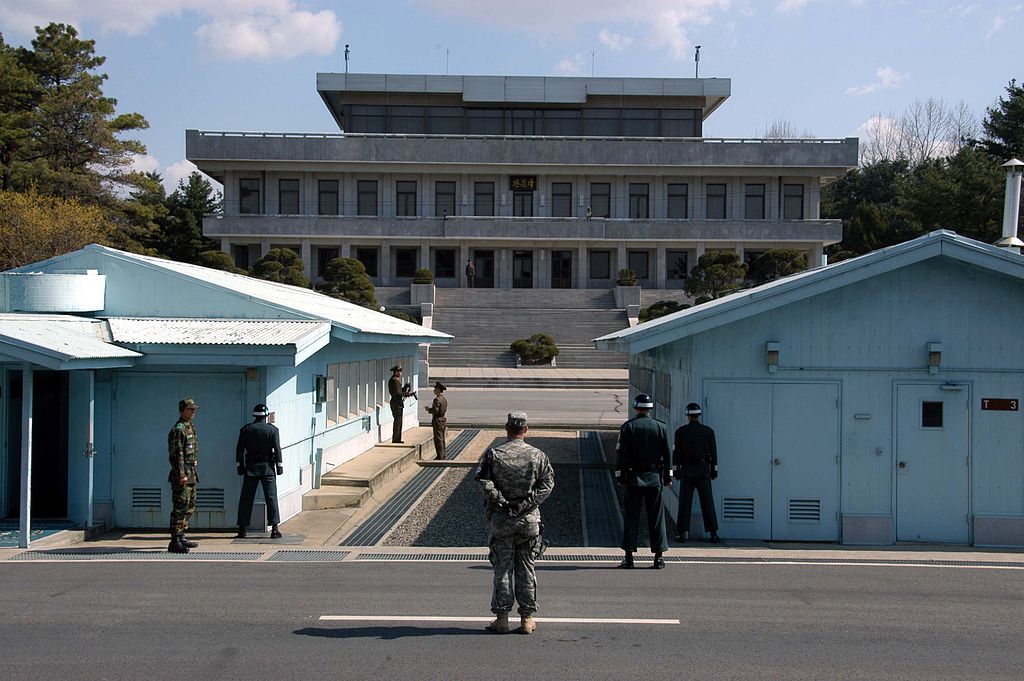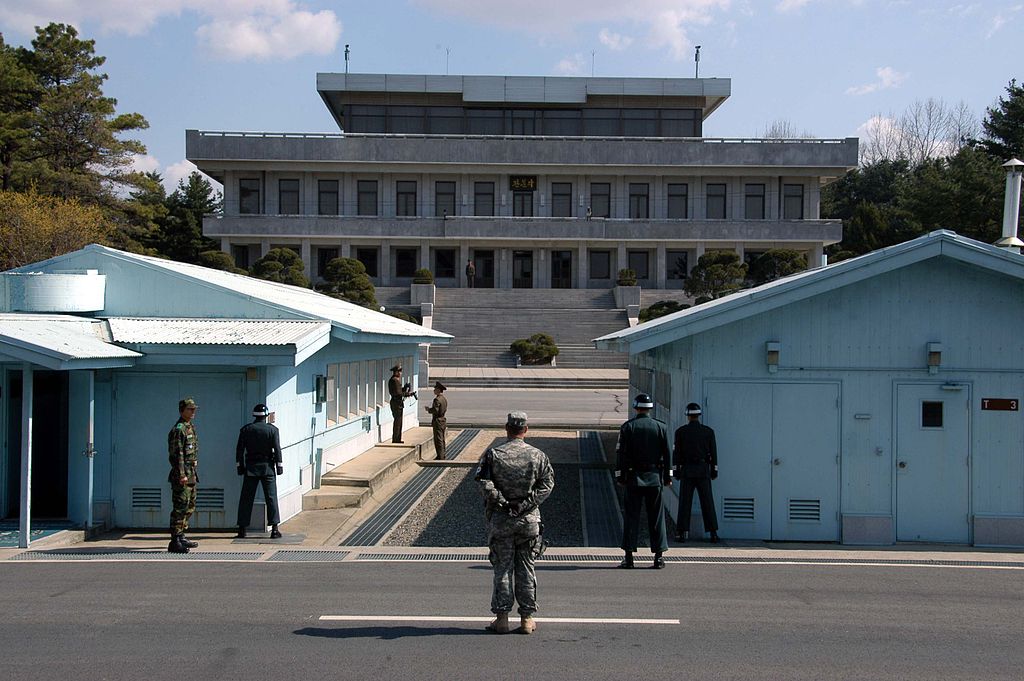
Decidedly not at peace: The Korean Demilitarized Zone
Christian Segers, Assistant Editor
The Korean Demilitarized Zone as viewed from South Korea towards North Korea. Photo courtesy Wikimedia Commons.
In light of American Vice-President Mike Pence’s visit to the Korean Demilitarized Zone (DMZ) last week, it is only fitting that the American people are given some background on the history of the DMZ and its many intriguing, yet puzzling features.
The Korean Demilitarized Zone is a byproduct of the 1953 Armistice Agreement for the Restoration of the South Korean State, in which a buffer zone (the DMZ) divides the neighboring countries of North and South Korea, in an attempt to establish peace, order and a clearly defined border between the warring nations.
Fact 1: Stretching 160 miles in length and 2.5 miles in width, the DMZ has attempted to provide protection from either bordering side, amidst growing unrest and an ever-increasing geo-political spotlight on the Korean Peninsula.
Fact 2: Although the DMZ itself is technically exempt from most weaponry and munitions, the land directly before the DMZ on either side are two of the most heavily militarized zones in the world. The DMZ is guarded by roughly 2 million military personnel and it is estimated that North Korea alone has placed firepower at the border that could launch 500,000 missiles at South Korea’s capital city within an hour of being provoked.
Fact 3: The line that separates the two hostile nations apart is visualized only by markers placed 200 meters apart from one another.
Fact 4: Inside the DMZ lies the Joint Security Area, or Panmunjeom (its official name), in which several small buildings lined side by side to one another serve as a place where negotiations between the quarreling nations can be hashed out and settled. Since 1953, all negotiations between the respective Koreas have taken place within the Joint Security Area’s multiple conference rooms.
Fact 5: The DMZ has been violated on numerous occasions, leading to over 250 documented South Korean, 50 American and an undisclosed number of North Korean casualties.
Fact 6: A series of four non-connecting tunnels were discovered from North Korea leading in to South Korea, where it is believed that the communist state built the tunnels in order to move quickly in to the South if an invasion were to occur.
Fact 7: North Korea claimed that the United States and South Korea built a border wall at certain parts of South Korea, while the latter two nations refuted the accusation.
Fact 8: The one road that runs between the two Korea’s is marked on the southern side by overpasses stretching over the road. However, the overpasses are rigged with explosives, subject to detonation if North Korea attempts to use the pathway for war or invasion-related purposes.
Fact 9: Inside of the DMZ, lies two villages, one on each side of the Korean border. On one side, the North Korean village of Kijong-dong, or the “Peace Village”, serves as a beacon of “prosperity” and wealth, in the communist’s hope of maintaining a positive front for outsiders. However, the village is little more than a propagandist tool, as it remains uninhabited, save by maintenance crews that service the North Korean image. On the other side of the border, Taesong-dong, is a village where inhabitants are granted leave to live within the DMZ due to their ancestry dating back prior to the Korean War.
Fact 10: According to Slate, “In the 1980s, the South Korean government erected a 323-foot-tall pole in Taesong-dong and flew the country’s flag. North Korea responded by building a 525-foot flagpole—then the tallest in the world—and raised an even larger flag over Kijong-dong.”
Fact 11: Camp Bonifas, a former United Nations (UN) military post along South Korea’s side of the DMZ, is home to what Sports Illustrated dubbed “the most dangerous hole in golf.” The one-hole, par 3 golf course is surrounded by land mines and has reportedly led to at least one instance where a stray ball detonated after an off-target swing.
Fact 12: The DMZ is home to a “naturalized zoo,” where both endangered animal and botanical reside uninhibited by human development or interference. Examples of the endangered species sheltered by the DMZ include the Siberian tiger, the Amur leopard and the Asiatic black bear.
Fact 13: The DMZ is the only place where both North and South Korean soldiers can be in close proximity of each other 24/7.
As tensions between North Korea and the rest of the world continue to increase, the DMZ serves as a constant reminder that Korea is decidedly not at peace.

